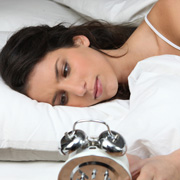In the United States, up to 18 million people have sleep apnea, and 10 million people may also have the condition but have not received a diagnosis, according to YourLungHealth.org. With sleep apnea, patients have breathing problems while they are asleep. Sleep apnea affects both men and women, though men tend to have the condition more often. Two types of sleep apnea exist: central sleep apnea and obstructive sleep apnea.
With central sleep apnea, patients have the cessation of the breathing due to problems with the brain sending signals to specific muscles. MedlinePlus noted that central sleep apnea can often occur with medical conditions, such as Parkinson's disease, stroke and encephalitis that affects the brainstem, severe obesity and bulbar poliomyelitis. Central sleep apnea can also result from cervical spine surgery complications. Besides problems with breathing while sleeping, patients can also have chronic fatigue, morning headaches and daytime sleepiness.
The most common type of sleep apnea is obstructive sleep apnea, in which the breathing problems during sleep result from the airway becoming blocked or narrowed. Patients can have a cessation of breathing from 10 seconds or more. Symptoms of obstructive sleep apnea include headaches that are difficult to treat, forgetfulness, grumpiness, sleepiness or falling asleep during an activity. Obstructive sleep apnea patients may also have depression and leg swelling, and children with the condition can also display hyperactive behavior, according to MedlinePlus. Left untreated, obstructive sleep apnea can lead to cardiovascular disease, such as high blood pressure and stroke.
In a new study published in the American Journal of Respiratory and Critical Care Medicine, researchers found that patients with obstructive sleep apnea had changes in the gray matter in the brain. HealthDay News reports that the study included 17 patients with obstructive sleep apnea and 15 controls; the researchers found that the obstructive sleep apnea patients had gray matter reductions in areas of the brain linked to cognitive functions. These patients also had issues with executive function, memory and attention. The changes in the brain from obstructive sleep apnea show that these regions are susceptible to low levels of oxygen, called hypoxemia, that results from the cessation of breathing during sleep. However, the researchers point out that treatment may partially or entirely reverse these changes.






Add a Comment1 Comments
i was diagnosed with sleep apnea two years ago. I recently had my tonsils removed and later found out my uvula was also removed. Does anyone had their uvula removed and what are the pros and cons involved.
February 13, 2012 - 6:06amthank you
jennifer
This Comment